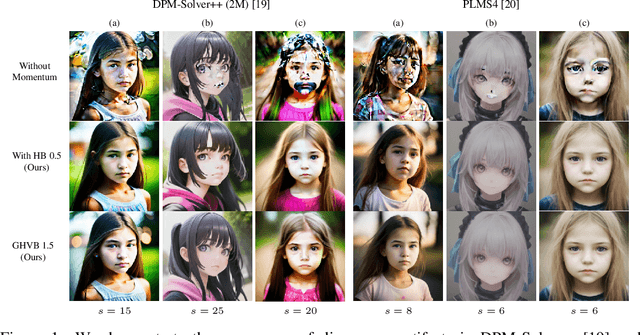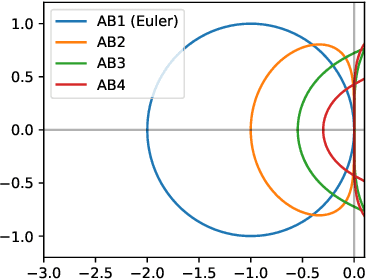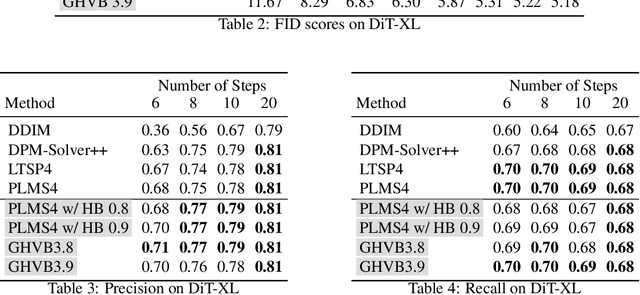Diffusion Sampling with Momentum for Mitigating Divergence Artifacts
Paper and Code
Jul 20, 2023



Despite the remarkable success of diffusion models in image generation, slow sampling remains a persistent issue. To accelerate the sampling process, prior studies have reformulated diffusion sampling as an ODE/SDE and introduced higher-order numerical methods. However, these methods often produce divergence artifacts, especially with a low number of sampling steps, which limits the achievable acceleration. In this paper, we investigate the potential causes of these artifacts and suggest that the small stability regions of these methods could be the principal cause. To address this issue, we propose two novel techniques. The first technique involves the incorporation of Heavy Ball (HB) momentum, a well-known technique for improving optimization, into existing diffusion numerical methods to expand their stability regions. We also prove that the resulting methods have first-order convergence. The second technique, called Generalized Heavy Ball (GHVB), constructs a new high-order method that offers a variable trade-off between accuracy and artifact suppression. Experimental results show that our techniques are highly effective in reducing artifacts and improving image quality, surpassing state-of-the-art diffusion solvers on both pixel-based and latent-based diffusion models for low-step sampling. Our research provides novel insights into the design of numerical methods for future diffusion work.
 Add to Chrome
Add to Chrome Add to Firefox
Add to Firefox Add to Edge
Add to Edge